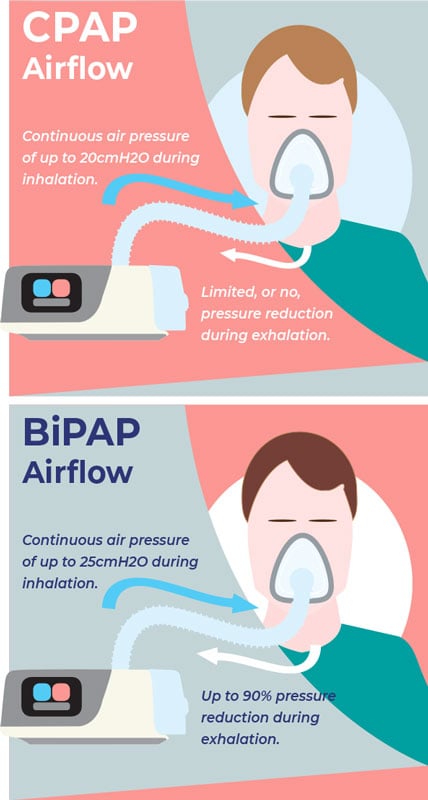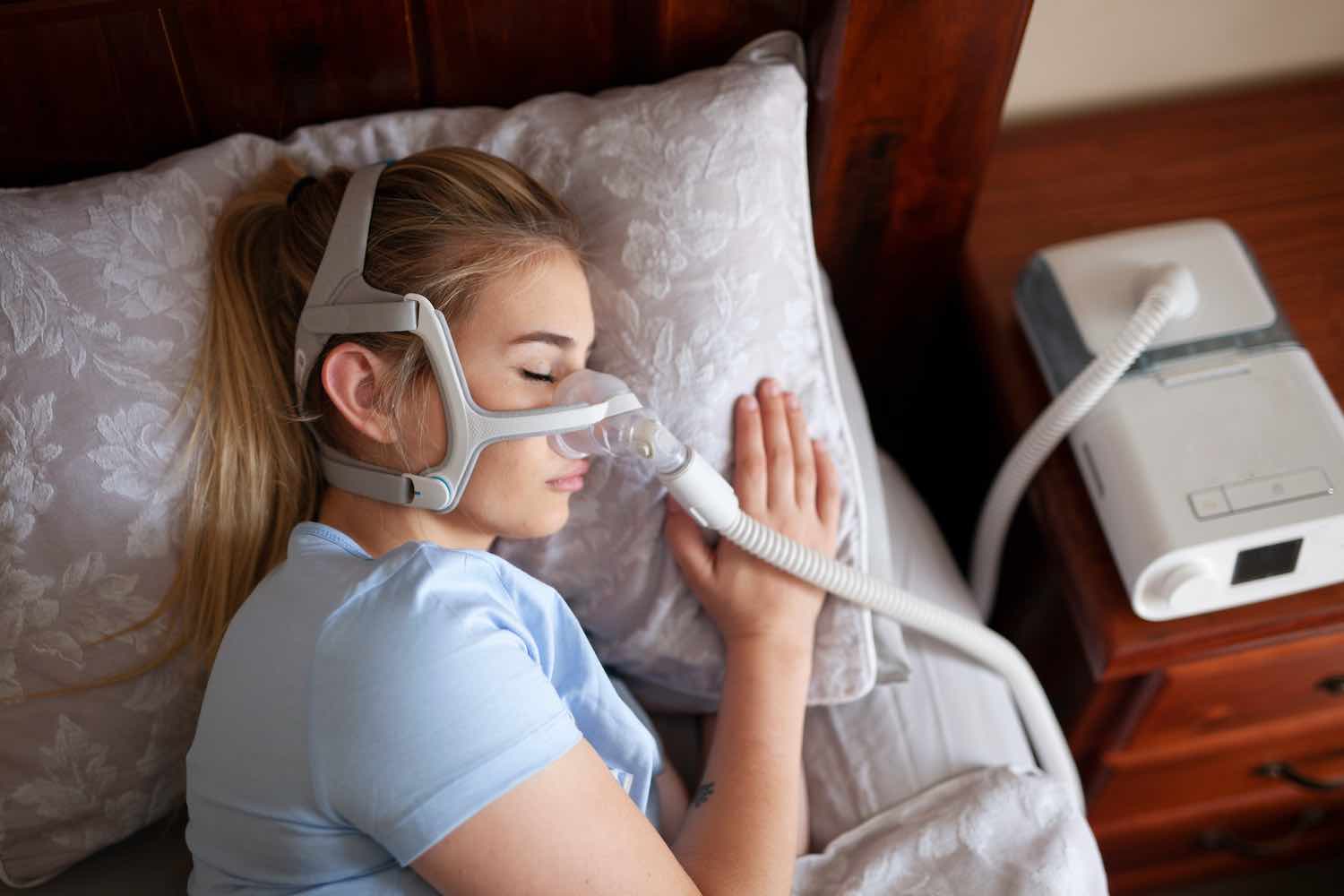BiPAP Rental: Easy Access to Advanced Respiratory Equipment
BiPAP Rental: Easy Access to Advanced Respiratory Equipment
Blog Article
Bipap vs. CPAP: Which Is the most effective for Your Rest Problem?
When browsing the complexities of rest conditions, the option between BiPAP and CPAP treatment is a vital factor to consider. Each method provides one-of-a-kind benefits customized to certain problems, yet the choice hinges on specific patient needs and convenience levels. While CPAP gives a consistent air movement suitable for obstructive rest apnea, BiPAP's dual pressure setups may enhance convenience for those with even more complex respiratory problems. Recognizing these differences can significantly impact treatment efficiency, leaving one to ponder which choice absolutely lines up with their health and wellness demands and way of life.
Understanding Rest Disorders
Sleep problems include a variety of problems that interfere with regular sleep patterns, impacting both the quality and period of rest. These problems can show up in different kinds, including insomnia, sleep apnea, narcolepsy, troubled leg disorder, and parasomnias. Each problem offers special challenges, often bring about substantial daytime tiredness, cognitive impairment, and emotional disruptions.
Insomnia is identified by trouble falling or staying asleep, while sleep apnea entails duplicated disturbances in breathing during sleep, often leading to fragmented rest. Narcolepsy, on the other hand, is marked by excessive daytime sleepiness and sudden sleep attacks. Agitated leg disorder causes awkward experiences in the legs, triggering an irrepressible urge to relocate them, which can also impede the capability to drop off to sleep.
The effect of sleep disorders prolongs beyond individual health and wellness, affecting overall efficiency, partnerships, and high quality of life. Comprehending the certain nature of each disorder is vital for reliable diagnosis and therapy. As rest wellness comes to be increasingly identified as a vital component of total health, attending to these disorders is essential for enhancing both sleep quality and everyday performance.
Just How CPAP Works
Continual Favorable Air Passage Stress (CPAP) therapy is frequently used as a main therapy for obstructive sleep apnea (OSA) The system of CPAP entails making use of a machine that supplies a consistent stream of air with a mask used throughout sleep. This air flow keeps positive stress in the respiratory tract, avoiding the collapse or blockage of the throat that can occur throughout rest.
When an individual takes in, the CPAP maker offers a continual flow of air, making sure that the respiratory tract continues to be open - BiPAP Rental. This not only alleviates the signs and symptoms of OSA, such as snoring and interfered with rest patterns, however additionally minimizes the involved wellness dangers, including cardiovascular issues and daytime fatigue
The pressure setups on a CPAP equipment can be tailored to satisfy private patient demands, commonly determined with a sleep research. Patients typically go through titration studies to locate the optimal stress level for their unique problem. Normal follow-up and modifications might be essential to ensure efficiency and convenience. On the whole, CPAP treatment has actually been revealed to considerably improve the quality of rest and general wellness for individuals struggling with obstructive rest apnea.
Exactly How BiPAP Works
BiPAP, or Bilevel Positive Respiratory Tract Pressure, is a specialized form of non-invasive air flow that is specifically advantageous for clients with problems such as complicated sleep apnea or breathing conditions. Unlike CPAP, which delivers a constant stream of air at a single stress, BiPAP supplies 2 distinctive pressure setups: a higher inspiratory stress for inhalation and a reduced expiratory stress for exhalation. This dual-pressure strategy permits simpler breathing, lowering the initiative needed throughout exhalation.
The device runs through a mask fitted over the nose or mouth, linked to a maker that generates air pressure. When the person breathes in, the equipment supplies the higher stress to aid with airflow, guaranteeing that the respiratory tract continues to be open. Upon exhalation, the maker immediately reduces the stress, making it more comfy for the patient to take a breath out.

Trick Differences In Between BiPAP and CPAP

In contrast, BiPAP (Bilevel Positive Air passage Pressure) offers two different pressure setups: one for breathing and a reduced one for exhalation. This dual pressure system permits even more comfy breathing, especially for clients who deal with exhaling against a continual pressure. BiPAP is often recommended for people with intricate sleep apnea, persistent obstructive lung condition (COPD), or those who require added assistance throughout rest.
In addition, the complexity of BiPAP tools normally results in a greater price and needs extra cautious titration than CPAP. BiPAP Rental. Understanding these crucial differences can aid in acknowledging which tool might be better for particular sleep disorders, establishing the groundwork for educated therapy choices
Picking the Right Treatment
The decision in between BiPAP and CPAP treatment primarily pivots on see this here the certain qualities of the sleep condition, the person's total health and wellness, and their convenience with the tool. CPAP, which delivers a constant stream of air, is commonly recommended for obstructive rest apnea (OSA)
On the other hand, BiPAP gives 2 degrees of pressure: one for inhalation and a lower one for exhalation. This dual pressure system is beneficial for individuals with intricate rest apnea or those who experience trouble breathing out versus a constant pressure. Additionally, BiPAP is frequently suggested for individuals with breathing conditions, such as persistent obstructive lung disease (COPD), where differing pressure settings can improve comfort and compliance.
Ultimately, a comprehensive evaluation by a sleep professional, including a rest research study, can aid establish which therapy straightens best with the person's needs. Aspects such as convenience, ease of use, and details medical conditions must additionally be taken into consideration to maximize therapy outcomes.
Final Thought
In recap, both BiPAP and CPAP offer distinctive functions in the monitoring of rest problems. CPAP is effective for obstructive sleep apnea through consistent airflow, while BiPAP provides double reference pressure settings that improve comfort for those with complex sleep apnea or respiratory issues. The choice between these therapies should be guided by individual needs and problems, demanding a thorough evaluation by a rest professional to make certain optimum therapy results and improved quality of rest.

In general, CPAP treatment has actually been revealed to significantly improve the high quality of rest and total wellness for individuals suffering from obstructive sleep apnea.
BiPAP is commonly advised for patients with complex sleep apnea, chronic obstructive pulmonary illness (COPD), or those that need added assistance throughout rest.
CPAP is effective for obstructive sleep apnea through consistent air flow, while BiPAP uses twin stress setups that boost convenience visit our website for those with complex sleep apnea or breathing problems.
Report this page